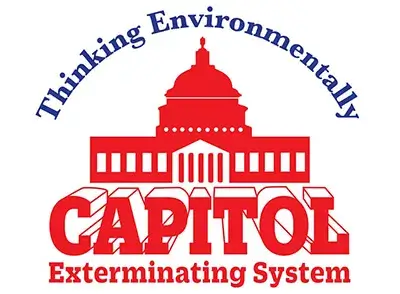
Pest Control: Results-Oriented Approaches to Shield Your Dwelling and Business
Preface to Pest Control
Pest Control pertains to the regulation or direction of creatures classified as pests – creatures that unfavorably modify human pursuits or vicinities. In New Jersey, in which varied environments meet suburban and city growth, effective Pest Control is not simply a luxury but a necessity for maintaining salubrious residential and business spaces. From the vast localities of Monmouth County to the close communities of Matawan, pest invasions can influence any person, no matter of how pristine or carefully tended their house may be.
The value of using productive Pest Control techniques could not be emphasized enough. For house owners, pests can deteriorate constructional solidity, pollute food supplies, and pose important health hazards. Enterprises confront these equal issues, with the added unease of reputation impairment and potential deprivation of consumers if invasions are detected. Frequent pests in New Jersey involve rats and mice like rats and mice, assorted creepy crawlies such as ants, cockroaches, and bed bugs, and the particularly devastating termites that can noiselessly compromise a building's base.
The Rationale Pest Control Matters
Health Dangers of Pest Control Treatments
Countless pests harbor and transmit disorders that can trouble humans and pets. Rats and mice are proven vectors of hantavirus, salmonella, and leptospirosis. Cockroaches can induce asthma attacks and sensitized sensitivities, especially in little ones. Ticks, abundant in New Jersey's sylvan zones, are notorious for conveying Lyme disease, while mosquitoes can carry West Nile virus and Eastern Equine Encephalitis. Skilled Pest Control helps alleviate these health dangers by eradicating the foundation of these potential disease spreaders.
Home Damage in Pest Control
The architectural harm created by pests can be widespread and exorbitant. Termites exclusively create over $5 billion in property injury annually throughout the United States, with New Jersey homes being notably susceptible due to the state's atmosphere. Small mammals can munch through power cords, creating fire hazards, while their persistent gnawing can destroy insulation, pipes, and lumber structural parts. Even apparently safe ants can damage lumber structures if allowed unmanaged, notably carpenter ants which are frequent in Monmouth County.
Financial Implications of Pest Control Services
Neglecting pest outbreaks can generate substantial monetary repercussions. What may start as a minimal incursion needing basic treatment can fast grow into a significant difficulty demanding broad rehabilitation. For businesses, especially those in the food trade or leisure sectors, pest issues can lead to flunked health assessments, interim shutdowns, and sustained harm to name and client reliance. Financing in periodic Pest Control is not just about quick satisfaction—it's a sustained monetary security.
Pest Control: Usual Family and Enterprise Pests
Rodents (Rats and Mice)
When it relates to locating rodent incursions in your New Jersey home, alertness is critical. You perhaps see pellets near food supplies, in cabinets, or underneath sinks. Bite marks on food packaging, timber, and electronic cables are clear marks of their existence. At night, you may notice grating noises in partitions, top boundaries, or below floors as these evening beings grow animated. If you detect shelters made from shredded stationery, material, or dried plant matter, that's a clear sign rodents have established themselves comfortable. Slick rub marks beside baseboards and barriers appear as rodents adopt the similar paths continually, while your pets may show peculiar deportment such as woofing or scratching at areas beneath devices or furnishings where rodents lurk.
Rats and mice in New Jersey homes and businesses pose multiple risks exceeding mere inconvenience. They can corrupt food and cooking counters with microorganisms found in their liquid waste and feces. Their constant compulsion to chew can ruin items, specifically cords, which forms fire hazards. In Matawan and neighboring locations, the Norway rat and house mouse are specifically troublesome, succeeding in both city and residential areas. Productive Pest Control steps are vital to address these harmful trespassers.
Invertebrates (Ants, Cockroaches, Bed Bugs)
Bug incursions present themselves in different manners based on the variety. Ant troubles turn evident when you see apparent ant tracks leading to food sources, or when you find minor piles of ground or wood pieces produced by carpenter ants. Cockroach outbreaks often show themselves through dark excrement similar to coffee grounds or black pepper, a unique moldy fragrance that suffuses plagued places, and the presence of egg cases in concealed corners. Bed bug predicaments become apparent as rust-colored spots on mattresses and belongings, shed skins near relaxing places, minute blood marks on sheets, and prickly red protuberances on skin usually positioned in a series or group.
Bugs exemplify the most varied classification of pests in New Jersey. Cockroaches can initiate asthma and hypersensitivities while spreading countless microorganisms. Bed bugs, while not disease carriers, generate notable soreness, sleep interference, and emotional anguish. Certain ant classes, like carpenter ants usual in Monmouth County's tree-covered regions, can make structural deterioration equal to termites across time. Trained Pest Control services can recognize distinct insect classes and carry out specific handling strategies that confront the specific actions and vulnerabilities of each pest.
Termites
Discovering termite behavior soon necessitates understanding the nuanced signals of their being. You perhaps perceive abandoned wings near openings and doors after swarmers have discovered a mate and established a new group. Mud tubes on exterior barriers, wood beams, or in crawl cavities work as secured highways for these detrimental insects. Wood that sounds unfilled when knocked indicates termites have been eating from inwardly. Entryways and apertures that quickly stick may signal bending from termite destruction, while fractured or blistering paint looking like water destruction often conceals termite operation under. Locating frass—termite waste reminiscent of diminutive wood-colored specks—delivers another evidence of their unwelcome existence.
Termites constitute perhaps the most noteworthy skeletal risk among all standard pests. In New Jersey, the Eastern subterranean termite is abundant and remarkably damaging. These creatures can linger hidden for durations while producing vast impairment to timber constructional constituents. Homes in Matawan and all through Monmouth County, notably older properties, are prone to termite invasions. The mean expense of pest control services term pest control.
Pest Control Security Aspects
Secure Application of Chemicals and Substances in Pest Control
When chemicals become required in your pest control approach, focusing on protection needs consideration to several important practices that shield persons, pets, and the ecosystem. Consistently examine and observe product guidelines precisely, as these legal directions demonstrate thorough testing and official review designed to decrease risks. Employ the smallest successful volume of pesticide to achieve management while limiting excess substance incorporation into your home space. Apply substances only in locations stated on the product instructions, preventing improper uses that may produce surprising hazards or lower efficacy. Don suitable protective apparatus as indicated by chemical producers to eliminate individual exposure during application. House substances in their initial containers with directions preserved to retain access to safety information and prevent misidentification. Maintain thorough records of all applications, writing down chemicals applied, dilution rates, areas treated, and schedules of use for future reference. Enable proper drying and airflow before reentering serviced spaces, specifically crucial in New Jersey's conditions where dampness can impact setting periods. Examine lower-toxicity choices when effective, as improvements in pest control have created many reduced-risk options that maintain performance while lowering potential dangers.
Protecting Pets and Kids During Pest Control Treatments
Extra safeguards grow necessary when executing pest control treatments in residences with vulnerable household individuals. Relocate pets while performing service and until surfaces are dry to prevent close exposure with damp chemicals or vapors that could generate harmful responses. Cover or relocate pet nutrition, water dishes, and items before application to prevent contamination that could cause unintentional consumption. Keep children's toys apart from application locations, specifically items that young kids might insert in their mouths. Wash and clean food making counters after application, even if they were not immediately applied to, to eliminate any residues that might have gathered during treatment. Hold kids apart from treated spaces for the specified period, prolonging this period for mobile infants who have more close exposure with floors and bottom areas. Think about pet-safe and child-safe product choices when available, as many contemporary products focus on particular pest anatomy while limiting mammalian poison. Most importantly, advise professional technicians about the presence of pets, kids, or pregnant household individuals before they formulate treatment approaches, enabling them to modify methods and chemical choices suitably.
Official Rules and Adherence with Pest Control
Pest control in New Jersey works within a legal framework created to defend public health and the surroundings while guaranteeing successful pest control. The New Jersey Department of Environmental Protection supervises pest management procedures, demanding professional pest control organizations to achieve defined criteria. Firms must use licensed applicators who have completed state examinations demonstrating skill in pest study, application approaches, and protection procedures. These businesses must copyright adequate insurance protection shielding both their professionals and their customers from potential damages or harm associated with pest elimination activities. Stringent guidelines control product keeping, transportation, and removal to eliminate natural pollution and improper entry. Technicians must give Safety Data Sheets upon request, noting the features and risks of substances utilized in treatments. Alert rules pertain for particular applications, specifically in multi-unit residences or business areas with many tenants. Complete application documentation must be kept, creating an review path of pest control procedures. Additionally, only products licensed for application in New Jersey may be legally applied, guaranteeing that local natural conditions and habitats have been examined in the licensing procedure. For industrial buildings in Matawan and throughout Monmouth County, additional rules may be relevant relying on the field, particularly for restaurant industry, healthcare, and child care buildings where pest control connects with additional public wellness considerations.
Eco-Friendly Pest Control Alternatives
Unified Pest Control (IPM) Strategy
Combined Pest Management embodies the top measure in contemporary pest control, concentrating on sustained protection through a mixture of strategies that limit environmental effect while increasing success. The IPM process commences with complete inspection and observation to pinpoint pest pressure accurately, establishing baseline information about kinds found and amount levels. This produces exact identification of pest varieties, guaranteeing management actions focus on certain habits and vulnerabilities rather than implementing broad methods. Specialists create level numbers that justify action, acknowledging that the simple existence of a limited creatures does not always demand action if populations remain beneath harmful thresholds. When intervention grows essential, IPM employs several treatment approaches in unity, generally starting with safest approaches and advancing only when essential. Across the method, experts assess success and adapt approaches as appropriate, establishing a flexible system responsive to varying circumstances. Most importantly, IPM stresses protection over elimination, handling construction and ecological elements that encourage pest groups rather than only destroying current insects. Many pest control businesses in New Jersey offer IPM-based programs that correspond with the state's effort toward safer pest treatment practices, especially in vulnerable areas like learning institutions, health institutions, and nutrition production centers.
Alternative Control Strategies
Efficient pest control often includes non-chemical approaches that can solve or lower pest troubles without introducing chemicals into the environment. Tangible shields such as mesh, entry strips, and sealing block pest invasion completely, addressing the problem at its source. Direct controls like snares and barrier equipment eliminate existing insects while blocking further infestations. Living systems including helpful bugs and organisms bring organic opponents that aim at certain creatures while keeping helpful life forms protected. Behavioral methods alter the surroundings to prevent organisms, such as changing watering schedules to lower dampness that attracts certain bugs. Habitat modification minimizes harborage and nutrition supplies, causing locations minimally favorable to undesired visitors. For certain insects like bedbugs, heat procedures offer extremely effective control without chemical remains by boosting temperatures above the temperature killing level for all living phases of the intended pest. Similarly, refrigeration approaches for kept commodity pests like grain bugs or pantry pests can remove problems in edible goods without chemical pollution. These techniques establish particularly useful in New Jersey's diverse settings, where nearness to water bodies, protected wild areas, and heavy population centers creates multiple conditions where synthetic decrease becomes wanted or required.
Green Pest Control Control Approaches
The pest control field maintains to evolve toward greater environmentally-friendly approaches that retain success while decreasing ecological impact. Organic pesticides extracted from organic extracts like chrysanthemum extract, neem, and essential essences provide specific treatment with limited lasting power in the nature. Microbial agents containing organisms, molds, or viruses that focus on individual pest species deliver accuracy that typical broad-spectrum chemicals are unable to compare to. Development inhibitors that inhibit pest procreation by interfering with maturation processes provide lasting community limitation without direct dangerous effects on developed creatures. Scent systems that watch or disturb pest breeding assist determine when control turns necessary and can stop reproduction in particular species. The business continuously embraces lower-risk products with small natural impact, transitioning away from traditional chemistries with more extensive consequences on beneficial life forms. Exact delivery methods that lower overall substance application provide services precisely where essential rather than distributing products over large regions. Eco-friendly certification schemes for pest treatment companies establish requirements for environmentally better service and offer consumers with plain recognition of services devoted to environmentally-friendly procedures. In environmentally vulnerable areas of New Jersey, containing portions of Monmouth County with proximity to marine systems, these green methods are notably valuable for protecting both individual health and wild ecosystems while nonetheless providing efficient pest control.
Finding a Local Pest Control Service Provider in New Jersey
Capitol Exterminating System
272 NJ-34
Matawan, NJ 07747
(732) 441-1900
Commonly Requested Inquiries (FAQs) about Pest Control
How frequently should pest control be carried out?
For the majority of New Jersey properties, every three months pest control offers proper safeguarding against cyclical pest threats. This routine corresponds with the area's separate periods, each bringing separate pest challenges that need protective care. Spring services commonly address emerging ant groups and surviving insects turning energetic. Summer applications center on mosquitos, parasites, and various flying insects that prosper in elevated temperatures. Cool season services arrange houses for rodents and sheltering organisms looking for shelter as temperatures drop. Winter procedures keep safeguarding against inside insects while dealing with mouse and rat pressure at its greatest. Though, this timing may expand for homes with certain danger aspects or continuing issues that require increased rigorous management. Homes near forested areas in Monmouth County may gain from additional parasite and flying insect procedures within top cycles. Structures with background of certain pest concerns commonly need directed additional procedures over the normal quarterly routine. Corporate buildings, specifically restaurant preparation operations in areas like Matawan, often call for every month service to sustain conformity with sanitary regulations and avoid infestations that could hurt credibility and trade activities.
Is specialist pest control safe for animals?
When carried out accurately, qualified pest control can be protected for pets through cautious substance choosing and usage methods that limit exposure. Current directed employment procedures and minimal-impact materials have markedly upgraded wellness features versus conventional pest management techniques. Modern procedures frequently employ compounds particularly engineered to have limited harm to animals while continuing effective against specific organisms with different physiologies. Professional specialists get instruction in usage procedures that place substances in locations pets can't enter, such as structural cavities, fissures and openings, or back of equipment. Though, animals should be relocated during application and until all services have solidified completely, observing particular pause periods suggested by the product company and specialist. Fish containers should be shielded and air devices shut down while performing application to prevent infection from floating particles. Pet belongings featuring sleeping areas, playthings, and feeding equipment should be removed or covered throughout treatment. Address any concerns with your pest control specialist, who can propose appropriate delay periods considering the particular services used and adjust techniques for residences with notably delicate pets like birds or lizards and snakes that may have separate physical weaknesses than felines and canines.
What are the signs of a serious pest problem?
Besides apparent pests themselves, multiple alert signs indicate probably major problems calling for prompt pest control treatment. Odd odors frequently appear with significant infestations – stale, fatty odors may reveal rodents, while pleasant, nutty aromas at times occur with German roach communities. Puzzling construction destruction like falling floors, peeling surface, or crumbling wood may expose termite presence or carpenter ant problems ruining construction parts. Odd sounds within structures or lofts, notably at evening, commonly indicate rodent behavior as these dark-active pests become energetic in hidden places. Abundant powder looking like small sawdust close to lumber parts may really be droppings or feces from timber-damaging insects. Some families encounter unknown wellness troubles like airway troubles or irritation that go away when distant from property, possibly revealing pest invasions affecting interior environmental purity. In New Jersey houses, particular care should be devoted to underground and crawlspace areas where moisture problems can maintain pest communities, specifically in established houses throughout Monmouth County where support splits and deteriorating cement offer various penetration spots. Discovering numerous expired bugs of the same variety suggests a bigger group nearby, while grease traces around trim reveal confirmed small mammal pathways with regular traffic.
Can I prevent insects without pest control products?
Absolutely, many organisms can be stopped through proper cleanliness, barrier methods, and environment adjustment without employing pesticide treatments. The cornerstone of natural pest control initiates with detailed exclusion procedures – filling cracks, holes, and holes that let organisms to invade structures in the starting place. Installing entry seals, mending torn barriers, and filling service access points eliminates frequent penetration locations. Getting rid of sustenance resources through proper meal containment in tight vessels, prompt cleaning of drops and bits, and frequent garbage collection considerably decreases draws that bring creatures inside. Decreasing water by repairing leaking plumbing, improving airflow in moist zones, and tackling runoff troubles stops the liquid resources many organisms demand. Sustaining a space space surrounding properties by pruning plants, eliminating leaf debris, and maintaining timber elevated and distant from properties lowers refuge locations and penetration spots. Applying physical obstacles like metal wire or iron stuffing to block larger holes offers enduring exclusion for mice and rodents. Routine maintenance that features vacuuming openings and crevices removes creature eggs and feeding matter that maintain pest breeding. For current problems, nonetheless, some type of treatment material may be essential to address confirmed issues, though many minimal-impact solutions are obtainable containing natural silica material, boric substance, and bug-eliminating solutions that provide reduced risk versus standard chemicals.
What should I anticipate while having professional pest control service?
A professional pest control procedure typically begins with a comprehensive assessment to determine pest varieties, access locations, and conducive circumstances relating to the problem. The technician should use effort checking both internal and exterior areas, giving special care to cooking areas, bathrooms, basements, and perimeter building supports where pest movement regularly concentrates. Following this evaluation, the professional should detail their observations in thoroughness and recommend a service plan customized to your unique condition, discussing both the intended insects and the techniques planned for controlling them. You may receive readiness directions before application, potentially containing repositioning objects, removing certain spaces, or securing pets. During the treatment, the technician will administer suitable materials to targeted zones based on the pest species determined, concentrating on gaps, gaps, and pest shelter zones rather than broadcasting procedures throughout entire regions. They may place tracking equipment like insect devices or bait containers that help observe development and supply persistent protection. After completing treatments, a qualified person should explain any subsequent guidelines such as ventilation standards, return periods, or surfaces to wipe. Before exiting, they should plan additional appointments if required for notably persistent organisms like sleeping pests or German cockroaches that commonly call for several treatments for total eradication. Throughout this process, specialists should invite inquiries and give obvious information about the materials and methods employed, demonstrating their instruction and pledge to both efficiency and wellness.
Effective pest control is an vital aspect of preserving sanitary, harmless home and working spaces in New Jersey. From the moist warm seasons that produce mosquitos and blood-sucking insects to the chilly months when small mammals seek refuge within, pest problems continue a year-round concern for occupants and organizations in Monmouth County and Matawan. By knowing common creatures, employing protective measures, and realizing when to seek qualified help, structure holders can safeguard their holdings and the safety of tenants.
Implementing a preventive approach to pest control is constantly more productive and affordable than handling to established problems. Routine evaluations, suitable care, and tackling tiny concerns before they worsen can eliminate the substantial charges and interruptions associated with major pest troubles. When professional help grows needed, deciding on a reliable, qualified pest control company who uses integrated pest treatment methods ensures effective results with minimal natural influence.
 Jeremy Miller Then & Now!
Jeremy Miller Then & Now! Hailie Jade Scott Mathers Then & Now!
Hailie Jade Scott Mathers Then & Now! Tiffany Trump Then & Now!
Tiffany Trump Then & Now! Elin Nordegren Then & Now!
Elin Nordegren Then & Now! Robin McGraw Then & Now!
Robin McGraw Then & Now!